Experiences
Home / Experiences
How to experience a magnificent stay
a journey is not a journey without memories.....
- FIAT RENTAL 500
- BEEXPERIENCE – A WHOLE DIFFERENT CHOCOLATE!
- “VIANDANTE DEL CIELO” WINE EXPERIENCE
- TRASIMENO TREKKING TOUR
- WATERSPORTS
- PILOT FOR A DAY
- WINE SCHOOL IN THE VINEYARD
- BEEXPERIENCE – A WHOLE DIFFERENT CHOCOLATE!
- GUIDED QUAD EXCURSION
- HORSE RIDE
- WINE TOUR TRASIMENO WINE ROUTE
- FISHERMEN FOR A DAY
- GITA A 2 ISLANDS PRESENT IN THE TRASIMENO PARK
- VISIT TO THE HISTORICAL MUSEUM OF PERUGINA
- HOT AIR BALLOON FLIGHTS
- UMBRIA IN VESPA
- MUSEUM TOURS AND MUSEUMS


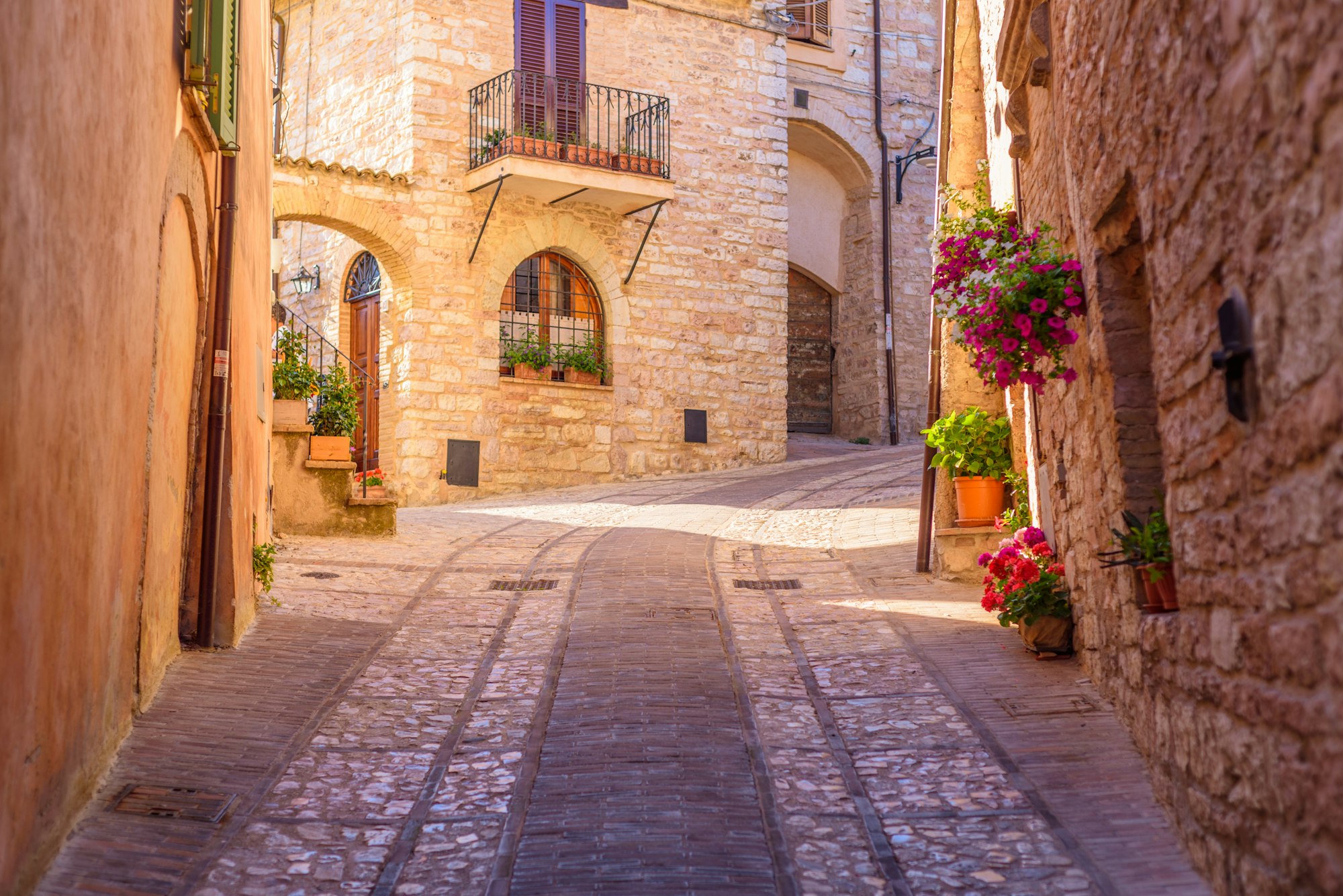
Around
around us...
You will be able to admire different wonders of our splendid peninsula…
Below we list some of the most suggestive locations
PASSIGNANO ON THE TRASIMENO (8 KM)
Passignano is a castle town located on a rocky promontory north east of Lake Trasimeno. Its history has always been linked to that of the castle, whose Torre di Ponente still dominates the town.
The transformation from a fishing village to the 'Pearl of Trasimeno' is dated 1907 when the first steamer, the Concordia, he was lucky enough to take Queen Margherita of Savoy on a trip to the lake, a fact that brought immediate notoriety to the town.
The Palio delle Barche takes place on the last Sunday of July every year, historical re-enactment of the escape of the Oddi family which took place in 1495, which sees the four districts compete in a race that alternates boat routes on the lake and on land, through the streets of the town with boats on their shoulders.


TRASIMENO LAKE
Lake Trasimeno is the largest body of water in peninsular Italy, the fourth largest in all of Italy. It is of fluvial origin and perhaps partly tectonic. Heart-shaped, extends over a surface of 128 km2. Its waters are a maximum of 6m deep, with low banks sometimes bordered by reeds, and is surrounded by green hills planted with vines and olive trees, with vegetable plots and rural settlements. They are present throughout the year 201 different species of birds, which can be admired with guided tours at the La Valle nature oasis. Administratively the Trasimeno area is part of Umbria, but culturally and geographically it is both Umbria and Tuscany: it is in fact located in an area where the border between the two regions remains undefined, in language and landscape, as well as in the flavors of cuisine and tradition.


TUORO ON THE TRASIMENO
(15 KM)
The settlement arose in the late Middle Ages, but during the Roman era it was the scene of the famous Battle of Trasimeno (217 a.C.), in which the Carthaginians led by Hannibal defeated the Roman legions commanded by the consul Gaius Flaminius. Tuoro sul Trasimeno was a fishing village and took its name from the term pesca dei tuori or bulls, a technique used on the lake in ancient times. In addition to the Palazzo del Capra, today owned by the University of Perugia, Tuoro offers an interesting itinerary dedicated to Hannibal's battle, long approximately 7 km, with equipped areas and information panels. The Campo del Sole is located at Punta Navaccia, where the visitor can admire 27 statue-columns in pietra serena made by various artists from 1985. Walking lovers can reach the characteristic Torre Torta in the hamlet of Vernazzano and the Monte Castelluccio Natural Park.

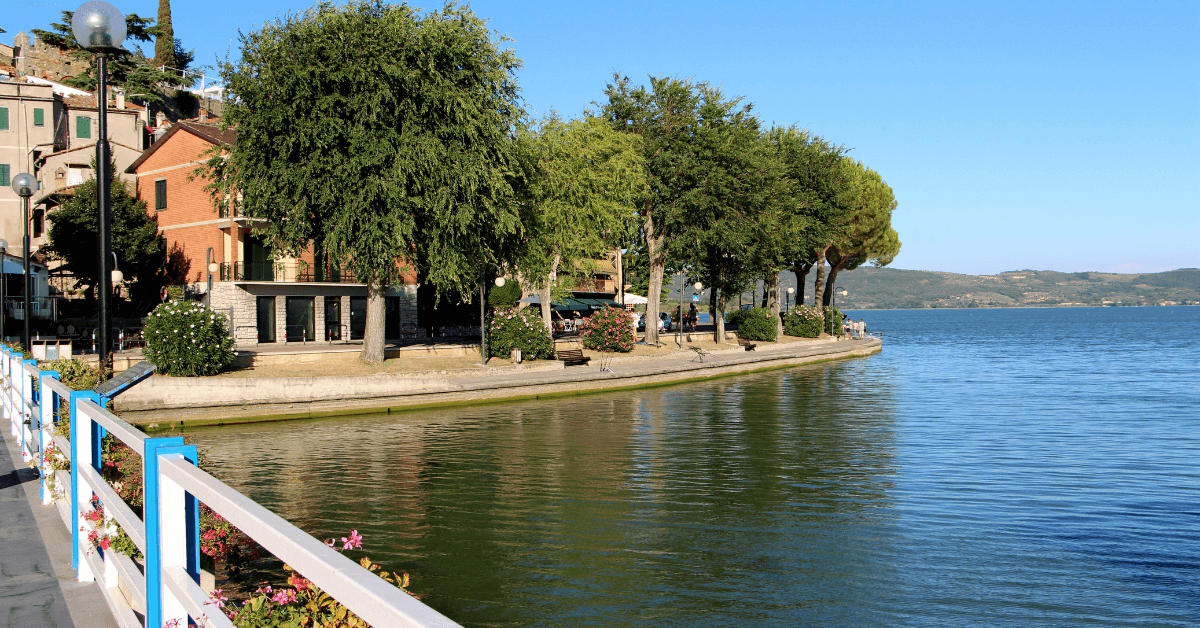
PERUGIA (25 KM)
Perugia, capital of the Umbria region, it has Etruscan walls and a delightful medieval historic centre. It is home to two universities: the University, founded in 1308, and the University for Foreigners. Piazza IV Novembre is the monumental and social center of the city, where the Gothic Palazzo dei Priori, home of the National Gallery, is located, the cathedral and, to the center, the thirteenth century Fontana Maggiore. Perugia, as well as a large artistic heritage, offers internationally renowned events and events, among these Eurochocolate in autumn and Umbria Jazz in July.
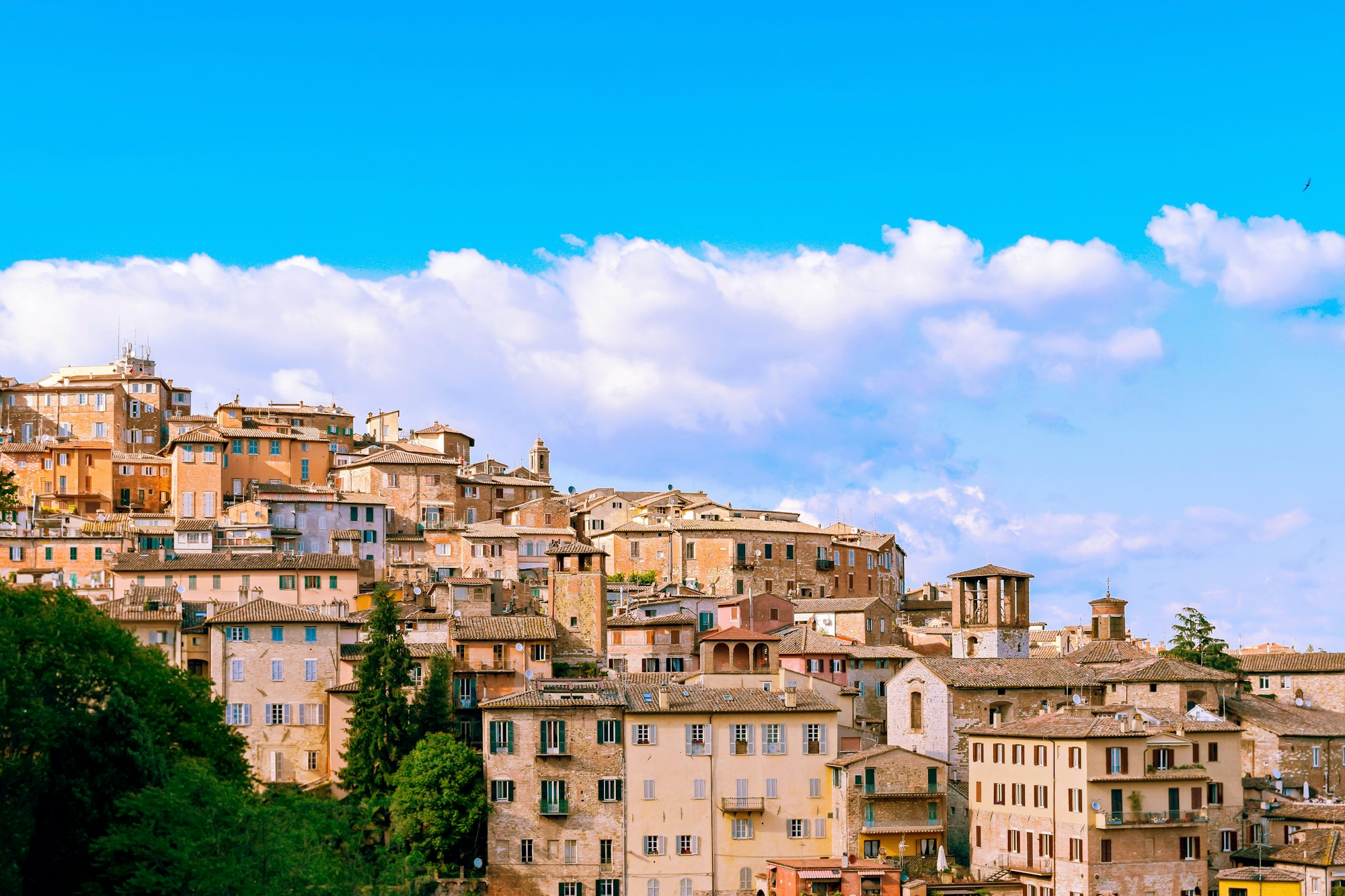
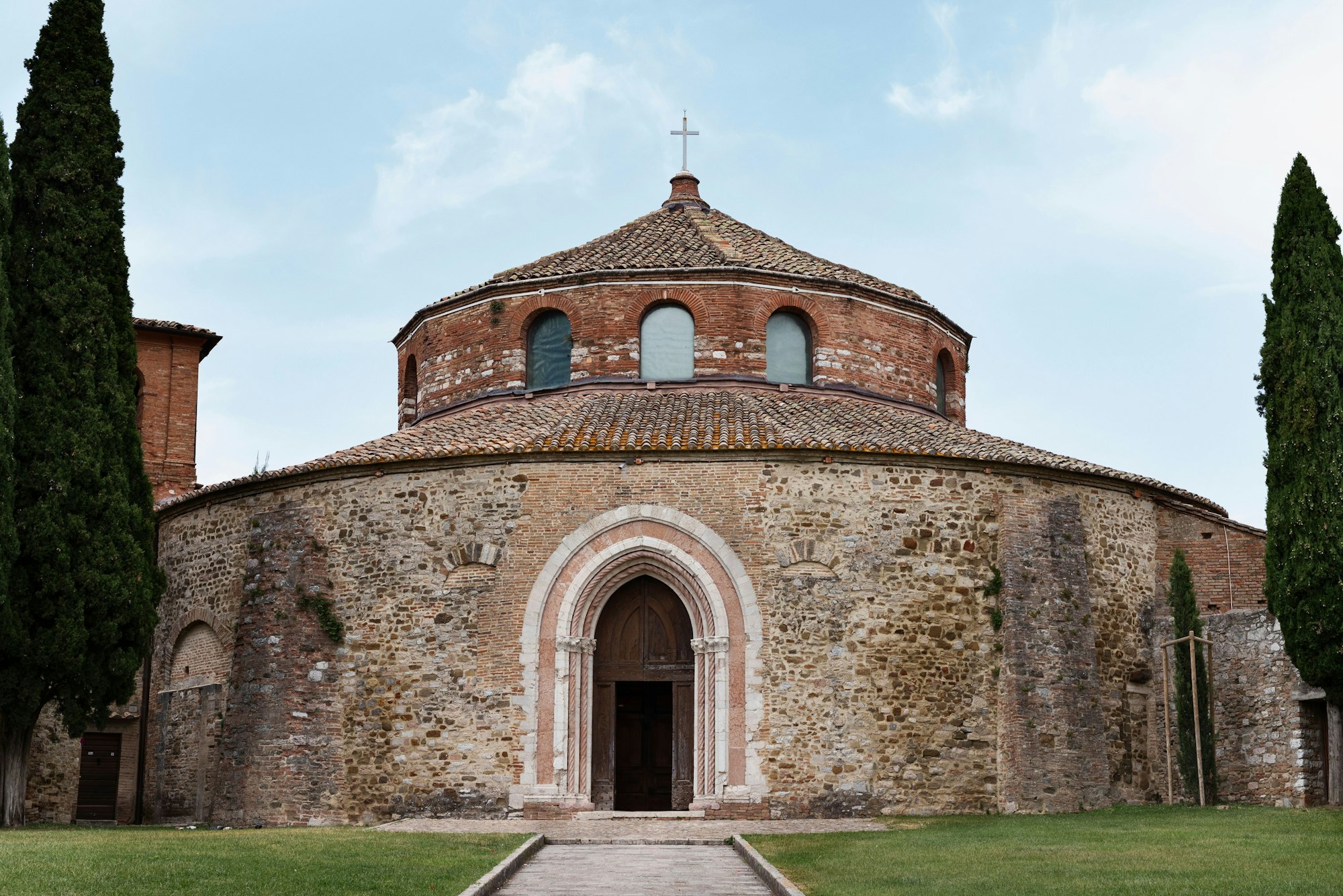
CORTONA (32 KM)
The city of Cortona is located approximately 600 meters above sea level, on the hill overlooking the plain between Arezzo and Perugia and its foundation should date back to between the 5th and 2nd centuries BC. Among the buildings of greatest artistic and architectural value in the oldest part of the city are located, as well as various noble residences, the Palace of the Captain of the People, the Town Hall, the Church of San Francesco and the Basilica of Santa Margherita. Made known abroad thanks to the American writer Frances Mayes, who set his novel “Under the Tuscan sun” there, released in 1996 and on which the film of the same name with Diane Lane was based.
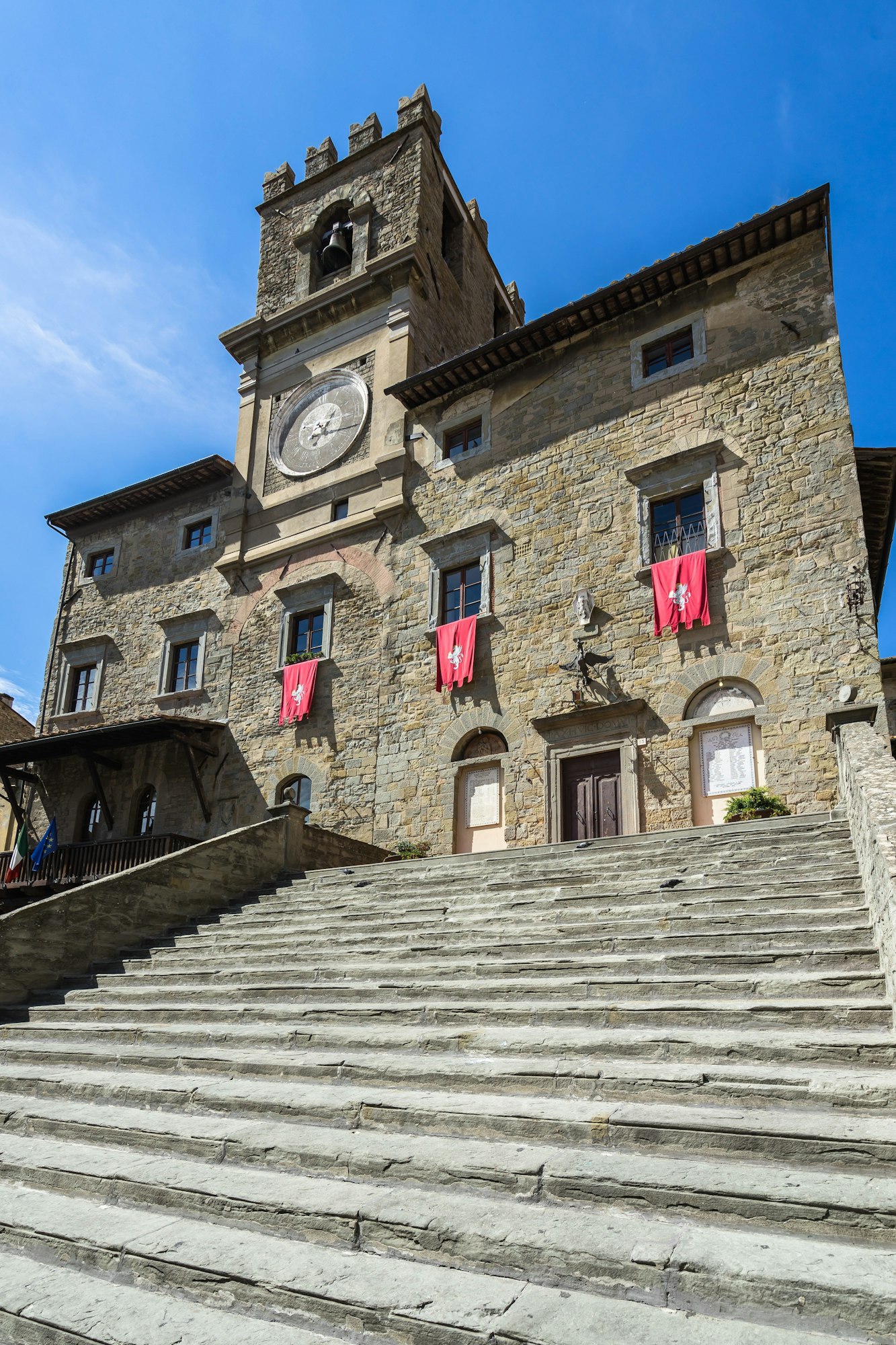
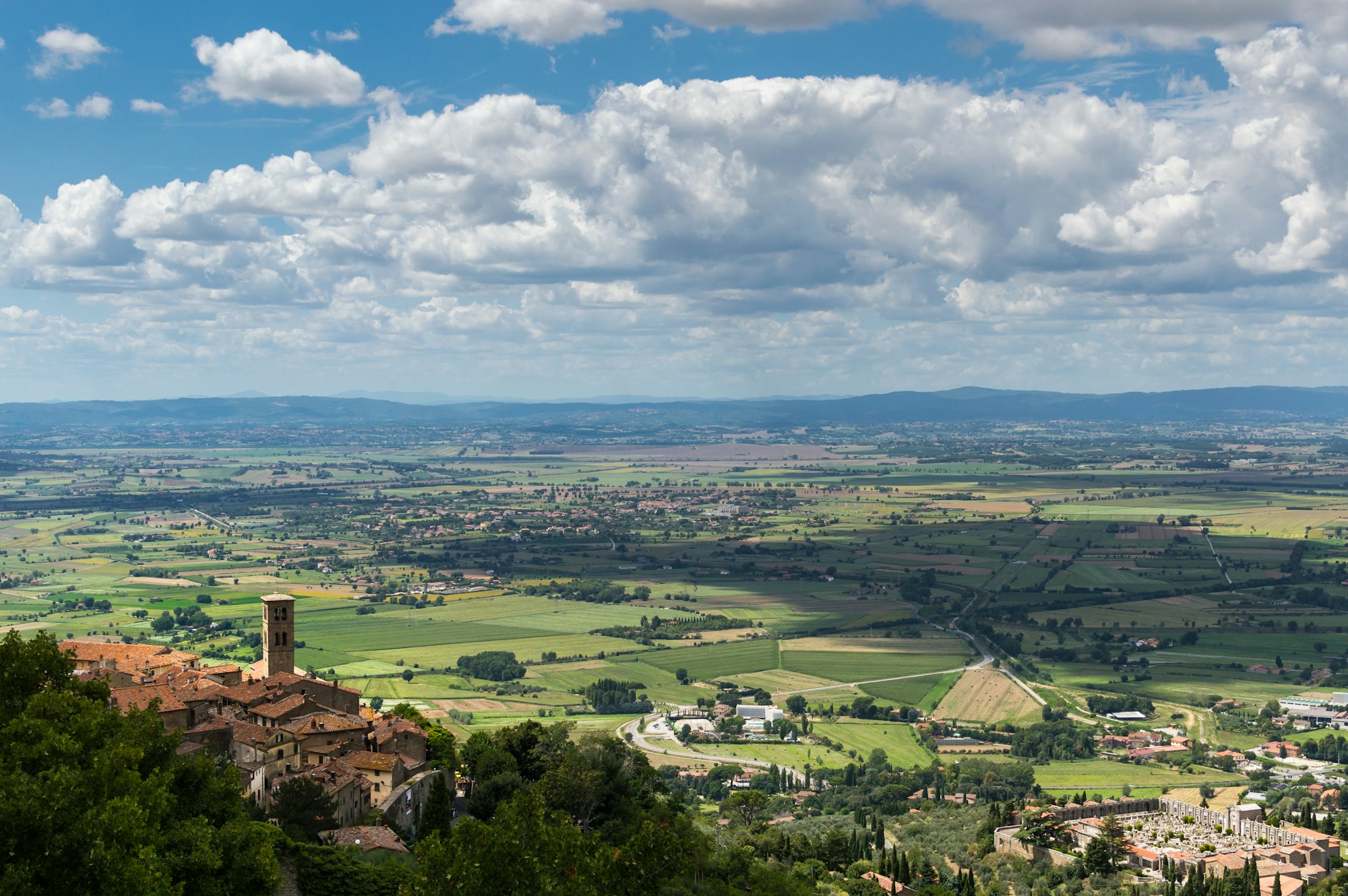
MONTEPULCIANO (45 KM)
Montepulciano, it is built along a narrow limestone ridge, at a height above sea level of 605 meters. The town is surrounded by walls and fortifications designed by Antonio da Sangallo the Elder in 1500 by order of Cosimo I. Montepulciano is mainly known for the grandeur of its Renaissance buildings, for the elegant beauty of its churches and for the 'Vino Nobile', one of the most internationally appreciated Tuscan wines. The urban center develops along a street that climbs the hill reaching the central square, Big Square, which is located at its top. For shopping lovers there are numerous leather shops, copper and ceramics.


ASSISI (50 KM)
Located on the slopes of Mount Subasio, it is the city of S. Francesco. The Palazzo del Capitano del Popolo overlooks the Piazza del Comune, the Palazzo dei Priori and the temple of Minerva. Famous are the Sacred Franciscan Convent with the Basilica extensively frescoed by Giotto, the fourteenth-century church of S. Chiara, the church of S. Maria Maggiore with the frescoes by Pinturicchio and the Rocca Maggiore, placed on a hill overlooking the city. The church of S. Maria degli Angeli has the Porziuncola Chapel at its centre, where the Franciscan order was founded. A few kilometers away you can visit the Franciscan hermitage of Carceri, built by San Bernardino of Siena in the 15th century.

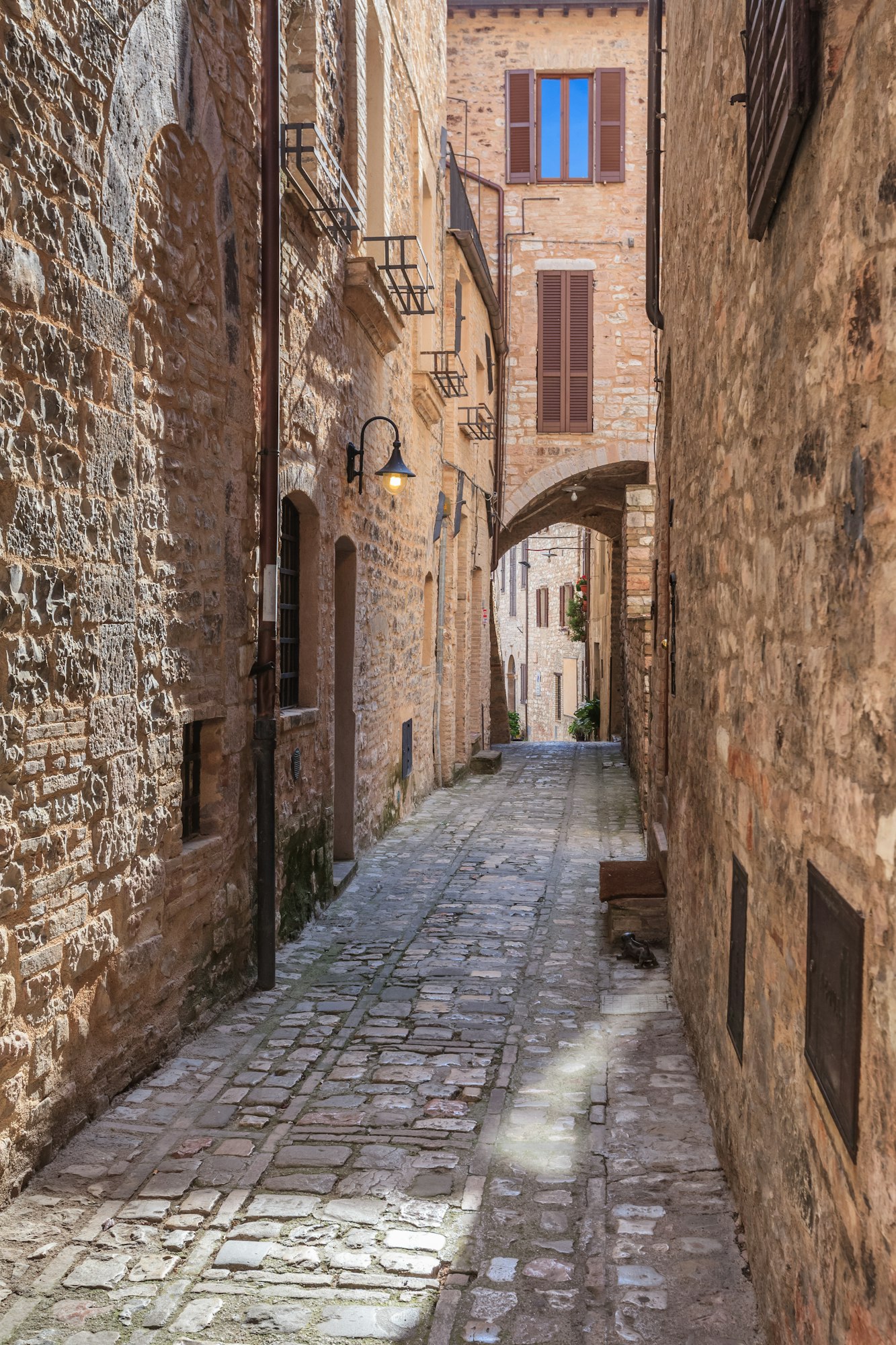
GUBBIO (50 KM)
Founded by the Umbrians, Gubbio was a center of primary importance during the Roman period and had its greatest urban development in the Middle Ages, with the construction of the city gates and the aqueduct. Piazza Grande constitutes a true work of medieval art in its construction almost suspended in space, delimited by the Palazzo dei Consoli and the Palazzo Pretorio, never finished. A cable car connects the city to Mount Ingino (908 m s.l.m.) and leads to the Basilica of Sant'Ubaldo. Il 15 The Festa dei Ceri takes place in May each year, experienced with great participation by the people of Gubbio, during which three wooden candles crowned with statues of saints are transported around the city.
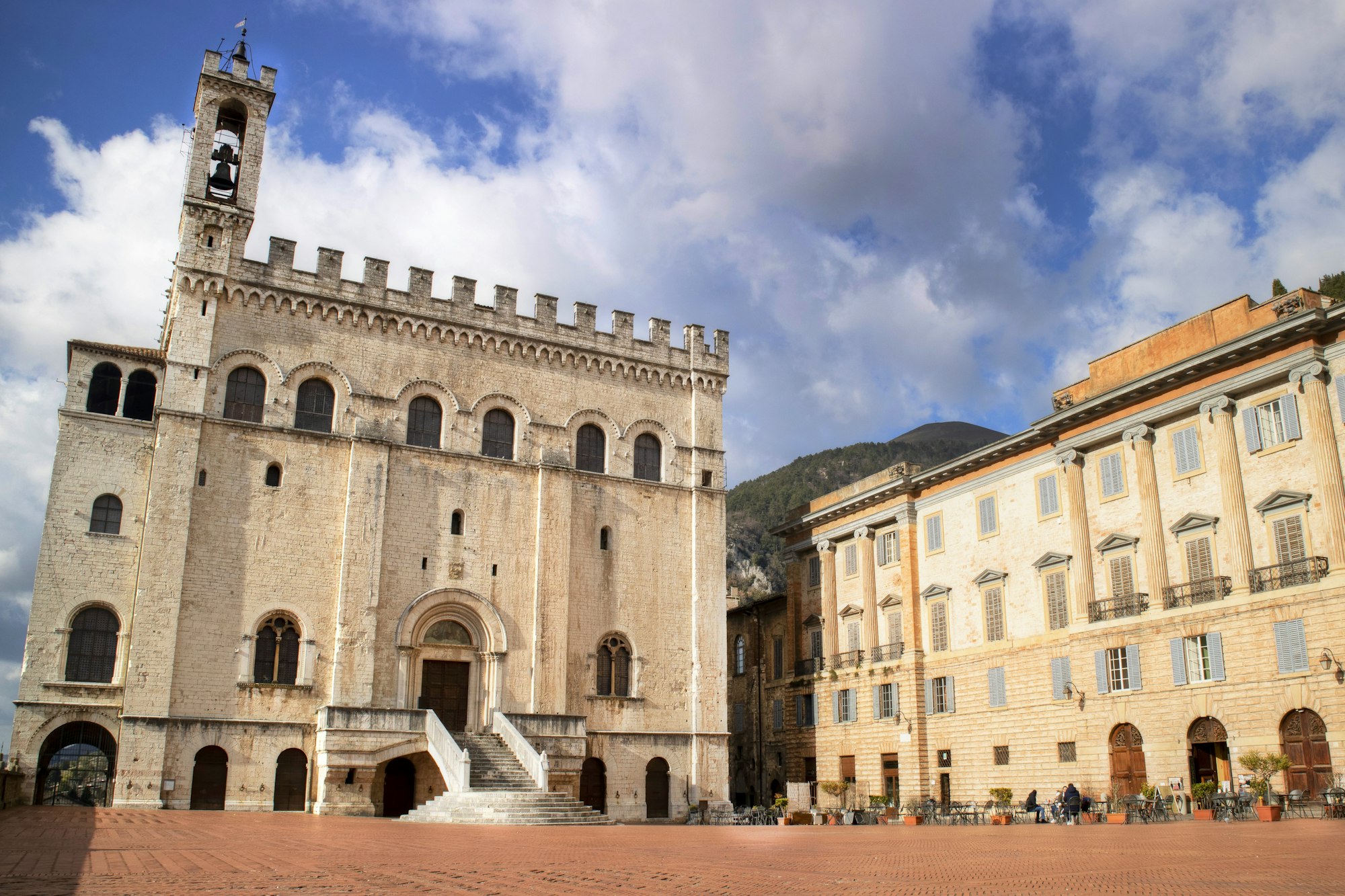

SPELLO (55 KM)
Spello is an enchanting village located at the foot of Mount Subasio and surrounded by centuries-old olive groves from whose plants a fine, high-quality oil is obtained. Founded by the Umbrians, it preserves the signs of its long Roman and Lombard history. In the 12th century it became an independent municipality and experienced an era of intense artistic activity in which it was enriched with Renaissance masterpieces by Pinturicchio, of Perugino and Nicolò di Liberatore known as the Alunno. Worth seeing is the Church of Santa Maria Maggiore, the civic art gallery, the Villa of Mosaics. Spello is known for its magnificent flower displays, floral compositions which are true works of art created every year on the occasion of Corpus Domini by artists and inhabitants of the village, in collaboration with the many tourists.
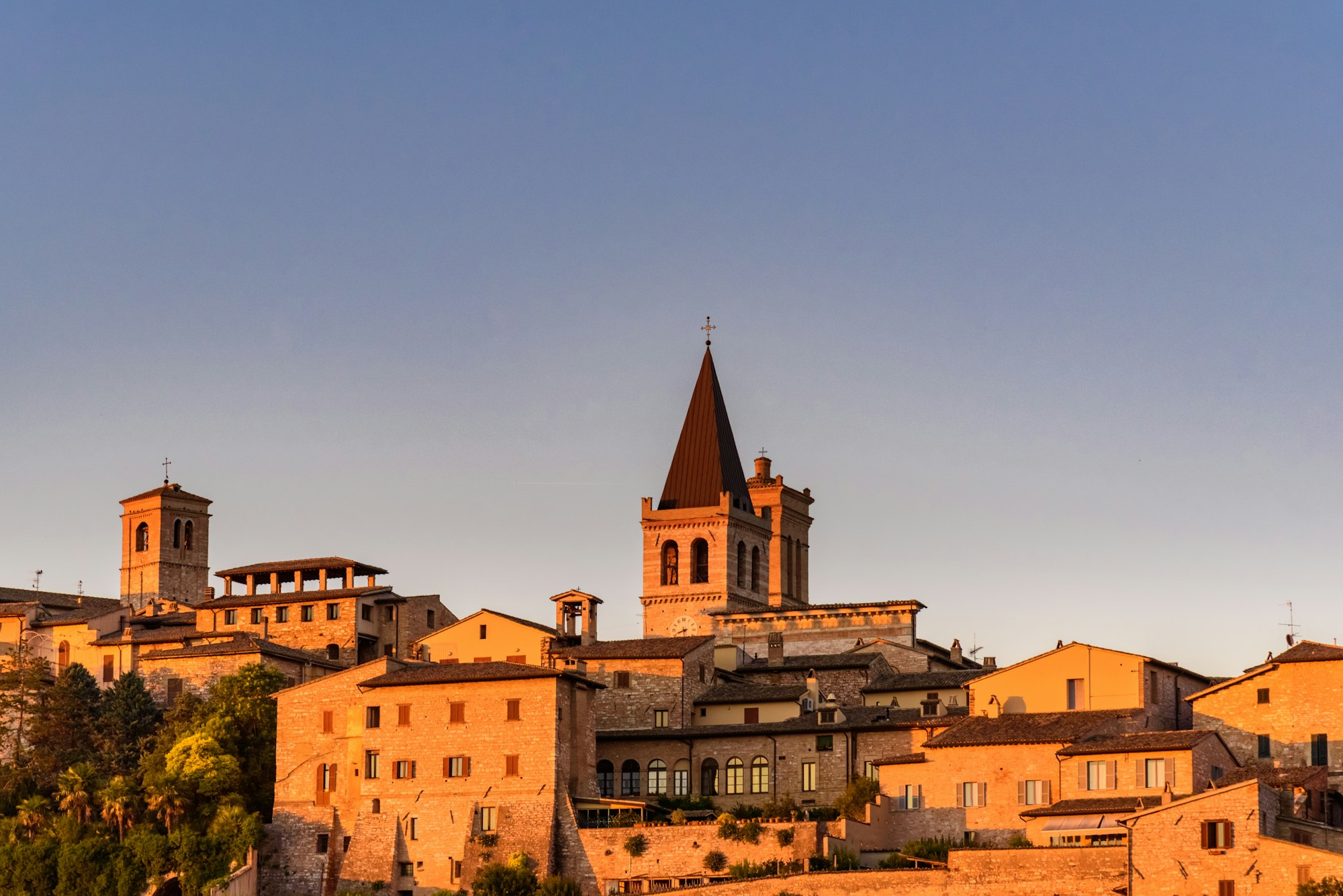
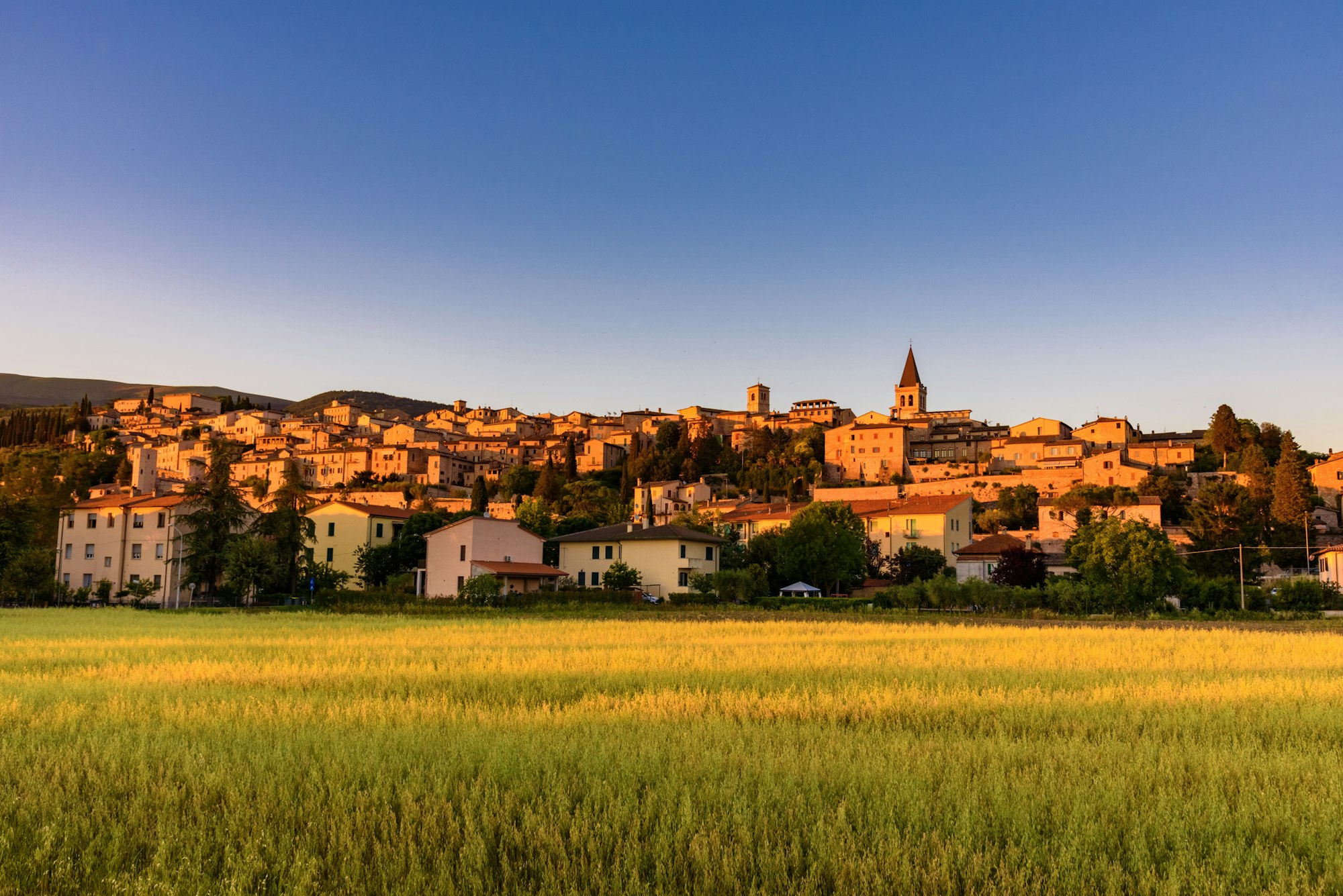
PENZA (60 KM)
In this Tuscan city the concepts of the ideal city typical of the Renaissance were put into practice, after Pope Pius II decided, In the 1459, to transform the appearance of his birthplace. He chose the architect Bernardo Rossellino who applied the principles of his master, Leon Battista Alberti. This new vision of urban space is particularly visible in Piazza Pio II and in the buildings around it: Piccolomini's palace, the Borgia palace and the Cathedral, with purely Renaissance external features and internal features in the late Gothic style typical of southern German churches. Pienza is the city of cheese and its famous Pecorino can be purchased in the charming shops or tasted in the numerous taverns.


MONTALCINO (80 KM)
Located on the top of a hill surrounded by olive groves and the famous Brunello vineyards, Montalcino is of very ancient origins. Its name derives from the Latin Mons Ilcinus, holm oak mountain, and its inhabitants are called Ilciniani. In the Middle Ages it came under the dominion of the Sienese who built the pentagonal fortress and the Palazzo dei Priori, today the municipal headquarters. The picturesque Piazza del Popolo is the medieval heart of the village. Numerous works by Sienese artists from the 1300s and 1400s are preserved in its museums. There are numerous cellars where you can taste the famous Brunello di Montalcino DOCG.
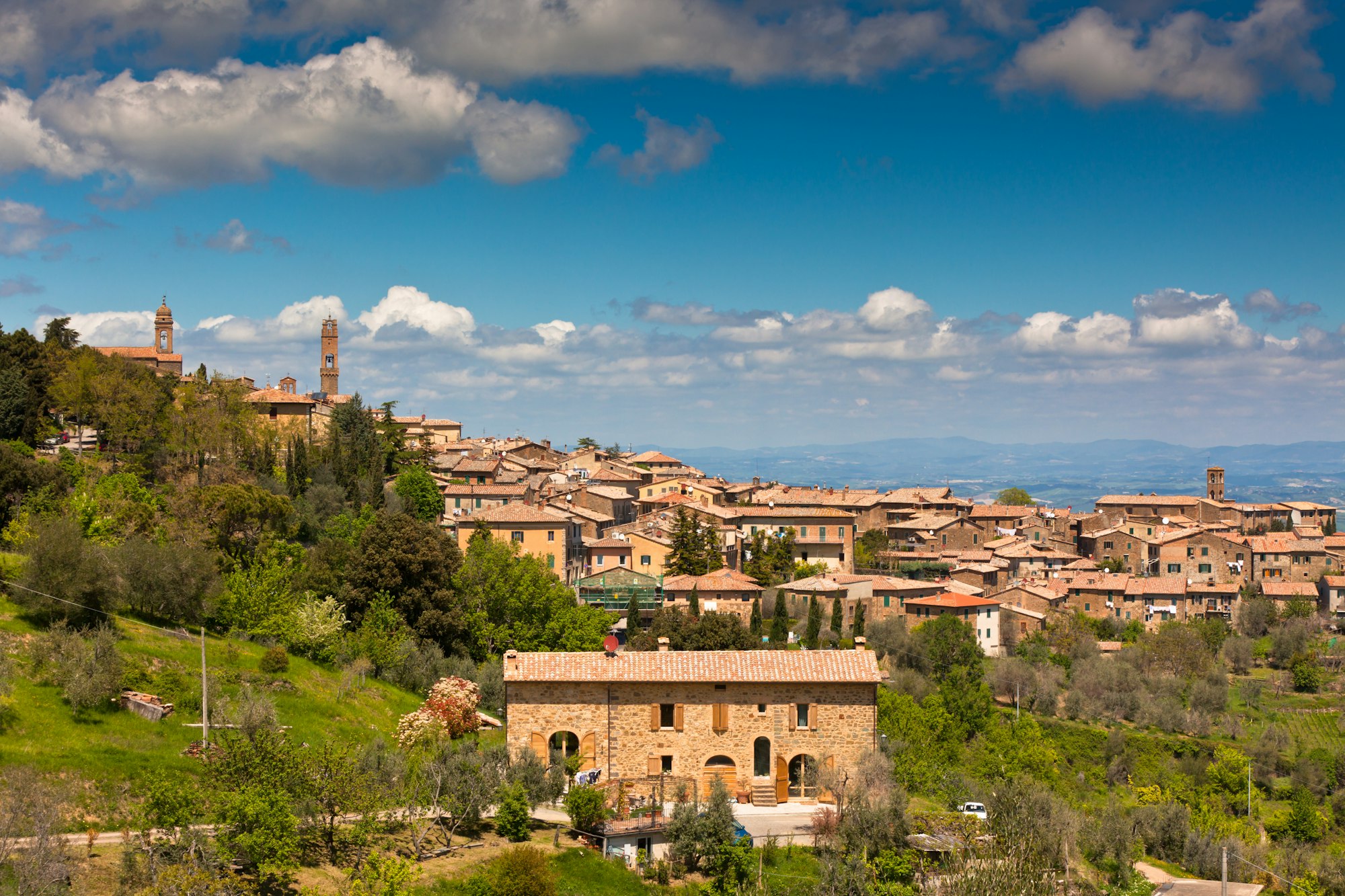
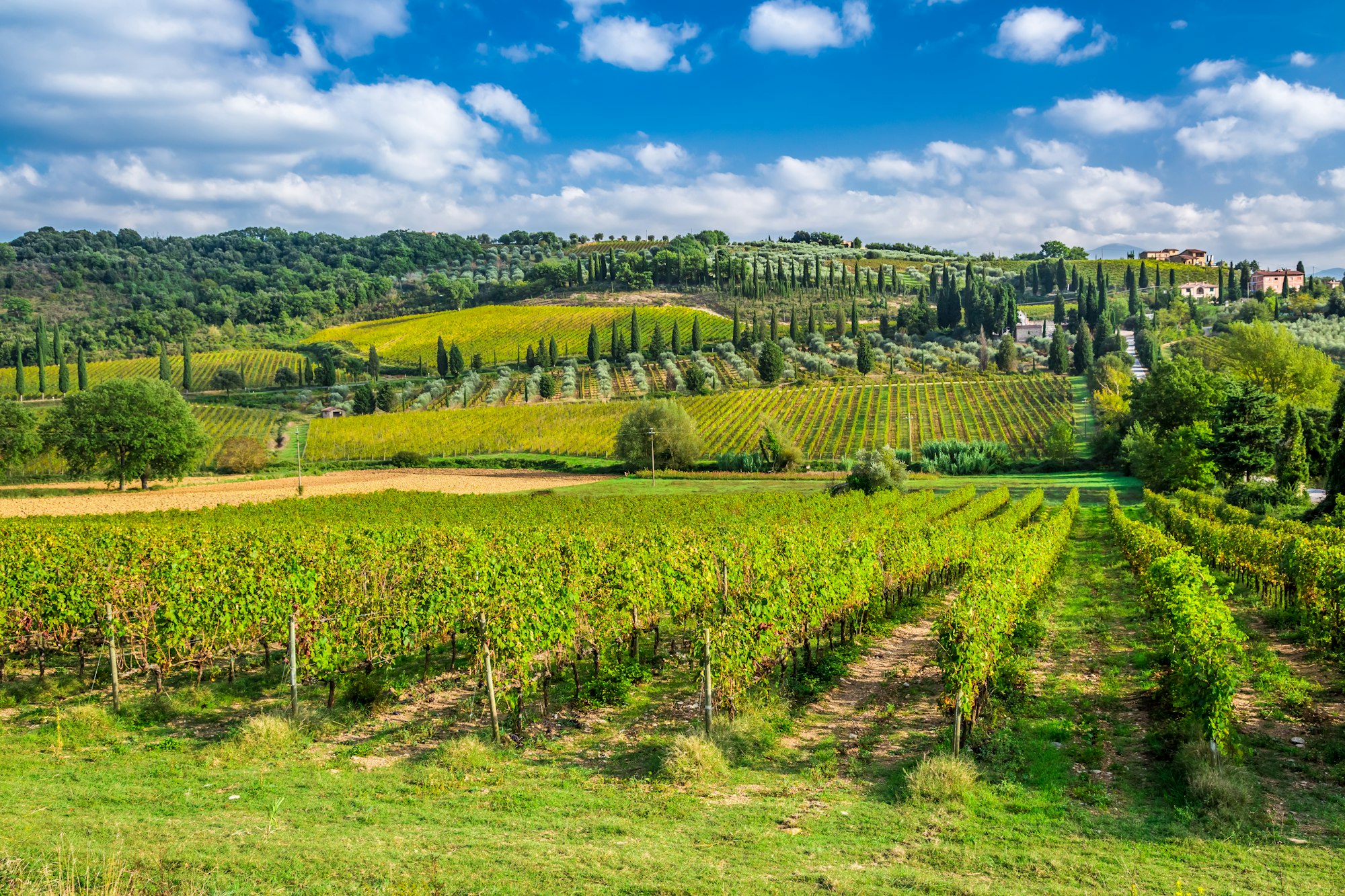
SIENA (90 KM)
The origins of Siena are probably attributable to the Etruscans, based on the historical findings of the time brought to light in this area. The city owes its fame to the famous Palio, horse race which takes place on 2 July and the 16 August of each year, to its wines known and celebrated throughout the world such as Chianti and Brunello di Montalcino and to the established confectionery production which has consecrated the tastiness of ricciarelli, of the cavallucci and the panforte. Unique for its particular shell shape and the architectural integrity of its spaces, Piazza del Campo represents the heart of the city.


FRASASSI CAVES (100 KM)
The tourist route of the Frasassi Caves, discovered in 1971, it's about 2 hours and is suitable for all those who have passed the 12 years of age, with few difficulties to face and characterized by short climbs, tunnels, bottlenecks and slides. However, it is necessary to pay attention to the slightly uneven and sometimes slippery surface, causes heavy mud accumulation. The "off-path" begins from the "Infinity Hall", last of the classic route and continues with the "Cinnamon" narrow passage to reach the "Four Sisters". A long gallery finally leads to the "Finland room". Ready to get dirty!!!

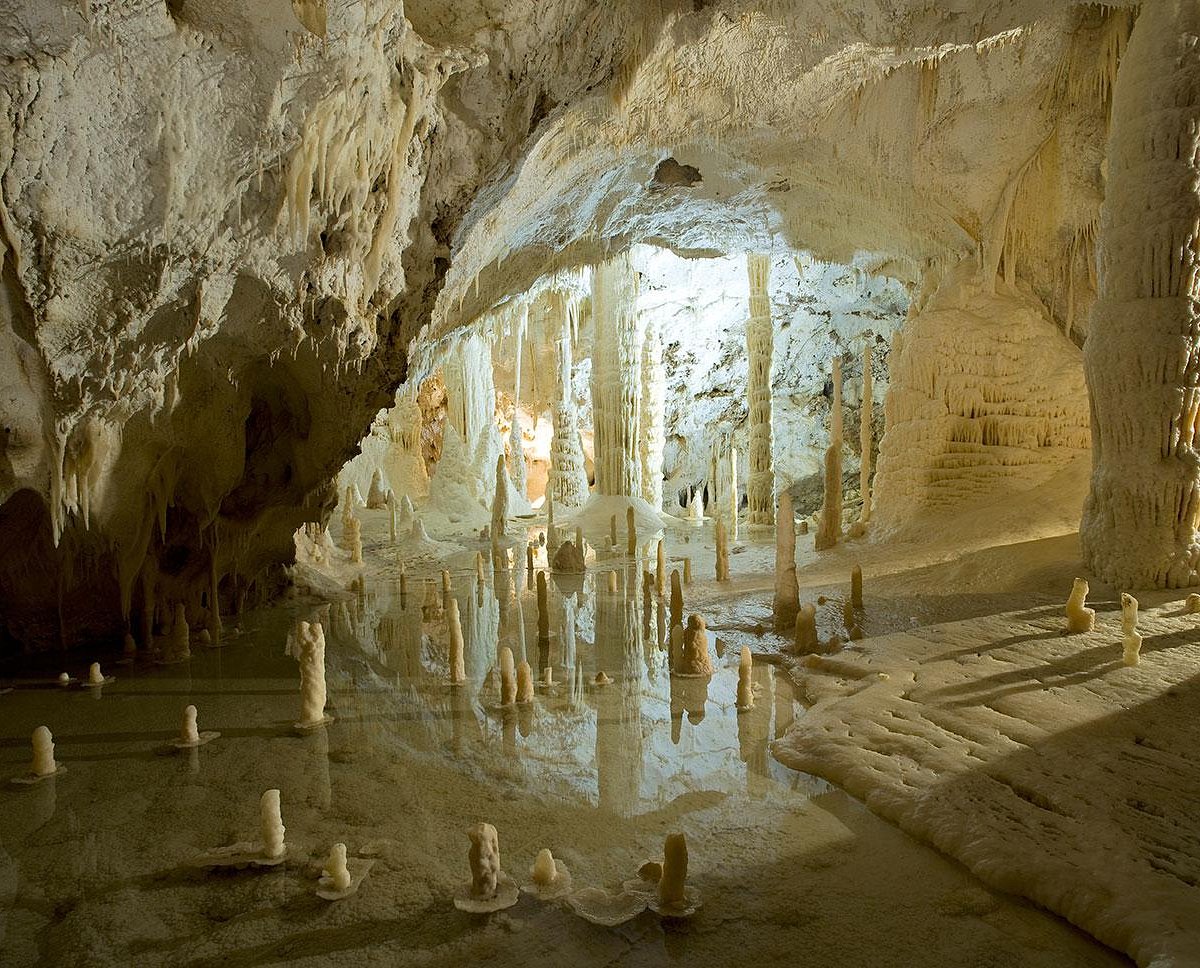
CIVITA DI BAGNOREGIO
(105 KM)
A long pedestrian bridge of approx 300 m which connects the viewpoint to Civita di Bagnoregio is the only way to reach the town, a fairytale village of Etruscan origin that seems to be suspended between myth and history: ancient houses that stand around the main square, where the Church of San Donato stands, and others overlooking the valley of the gullies, Civita di Bagnoregio has been called "The Dying City", due to the continuous erosion of the small hill on which it stands.
You can access the bridge by paying for a ticket that can also be purchased online or by choosing group or private tours.

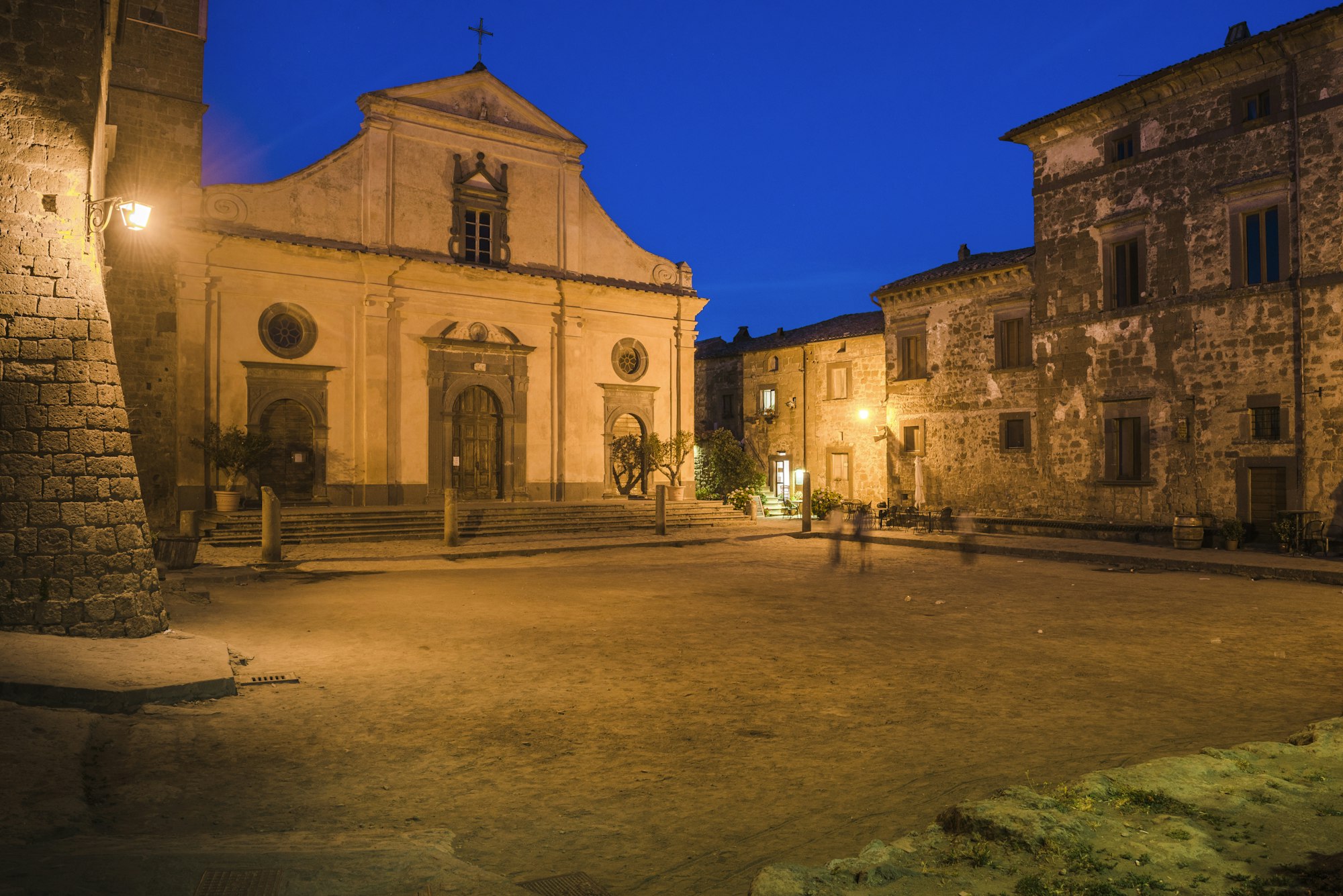
WATERFALL MARMORE (115 KM)
The Marmore Falls has very ancient origins, dating back even to 271 a.C., in the Roman era, when the consul Manius Curio Dentatus ordered the construction of a canal to drain the stagnant waters of the Velino towards the Nera, diverting the course of the river and forming the waterfall. With time, to counteract flooding during the flood period of the two rivers, two new canals were built, one in 1422 and one in 1547. It was only with two more surgeries, In the 1601 It is in the 1787 that the waterfall took on its current appearance. The Park offers six routes, some are also suitable for children and others are more challenging, as well as the rafting activity with different proposals based on your experience.


FIRENZE (130 KM)
City of Roman origins and known throughout the world as the Cradle of the Renaissance, Florence is one of the most visited tourist destinations in Italy and the entire world. The heart of Florence is represented by Piazza della Signoria overlooked by Palazzo Vecchio and the Uffizi Gallery, one of the most important and visited museums in the world. Not far away is the Cathedral of Santa Maria del Fiore with the famous dome by Brunelleschi, Giotto's Bell Tower and the Baptistery of San Giovanni and a little further on the historic Ponte Vecchio, known today for its famous goldsmiths' workshops and for the romantic panorama that can be admired there.


ROMA (195 KM)
Roma, historic capital of the Roman Empire and seat of the Papacy, it is the capital of Italy. Definitely one of the most beautiful cities in the world, rich in many places of historical interest, artistic and cultural: Saint Peter, located within the Vatican City, it is the most famous church of all, The Colosseum, located in the center of the city, it is the largest Roman monument, Castel Sant'Angelo has transformed over time from a funerary monument to a military outpost, from prison to museum. Piazza di Spagna, Piazza Navona, the Trevi Fountain, Imperial Forum, il Pantheon, the Baths of Caracalla are just some of the possible examples that can be admired in the Eternal City, the city with the largest number of churches and fountains in the world







